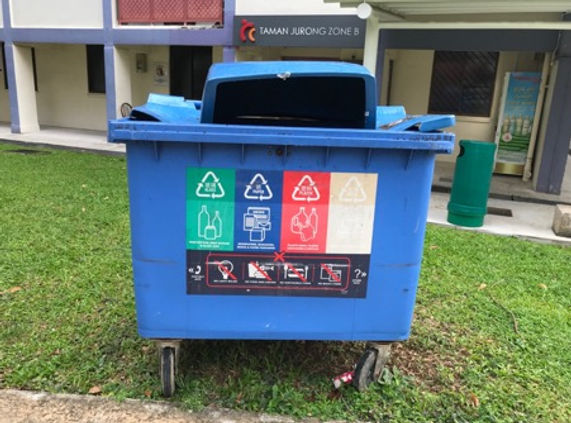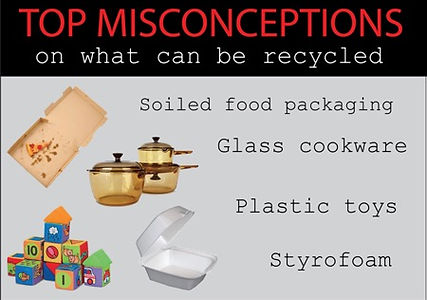Recycling: To Bin or Not to Bin
Singapore households recycle regularly, but surveys have shown that many are not doing it right

Blue recycling bins are placed at open areas that are convenient and accessible for residents.
By Michella Lim
According to authorities, disposable paper plates and plastic toys are not recyclable yet still commonly seen in neighbourhoods’ blue recycling bins.
A household survey conducted by the Ministry of the Environment and Water Resources (MEWR) and the National Environment Agency (NEA) in 2018 found that around 60 percent of Singaporeans are recycling regularly.
On the flip side, authorities have voiced out that at least 40 percent of what goes into the recycling bin cannot be recycled. Some items include soiled paper food packaging, tissue paper, and styrofoam, and the ones that should the donated instead, like soft toys, pillows, and shoes.
In 2019, a report by Singapore Environment Council (SEC) showed that there has been an increase in plastic products being disposed in general waste. In addition, contaminated items can taint the whole recycling bin from being classified as recyclables. This easily contributes to our nation’s extremely low recycling rate for plastic.
Although there are several instructions on the blue recycle bins to teach residents what can be recycled, the lack of eagerness to recycle properly may lead to Singaporeans choosing not to recycle altogether.
Mr Muhammad Nur Shafiq Bin Azahar, 24, the manager of Taman Jurong Zone B Residents’ Committee, voiced out that education level and lack of recycling knowledge could be what’s hindering residents in Taman Jurong from Recycling.
“There are a lot of elderly and needy families,” said Mr Shafiq.
“I hope that there will be more campaigns on educating these elderly and needy families on the importance of recycling,” the representative added.

Top misconceptions of what can be recycled by Singapore Environment Council (SEC).
According to Channel NewsAsia (CNA), 60 percent of respondents from a survey conducted by agencies thought it was essential to sort out recyclables before depositing into the blue recycling bin.
Shannon Leng Xuan En, 19, a resident of Taman Jurong, shared the same sentiments as several of the respondents. “That’s one of the reasons why I rarely recycle,” she said. In reality, recyclables will only be transported to material recovery facilities where sorting will take place.
On the contrary, there is a resident who believes in recycling correctly. “It is important to me,” says Ng Wei Ling, 24, resident of Taman Jurong.
“That is how I can play a part in saving the Earth,” she added.
Since 2014, both MEWR and NEA have been putting in great efforts to make recycling more convenient for Singaporeans. One example would be launching of public housing developments with dual chute for both refuse and recyclables.
According to MEWR and NEA’s public relation statement, pilot trials of in-home recycling will be carried out in residential households. Moving forward, the design of blue recycling bin will be re-designed to help residents recycle correctly.
With the up-coming and on-going facilities provided by environmental groups, we are able to strive for a more sustainable Singapore.




